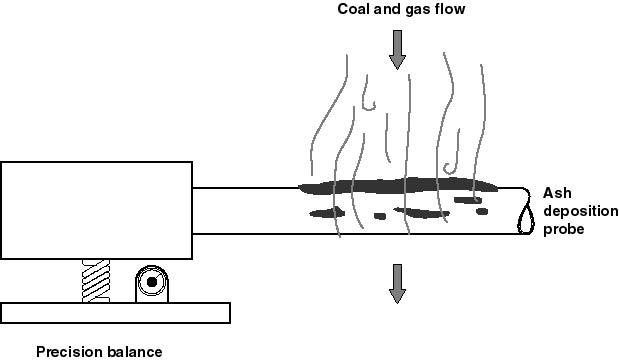|
|
|
In many experiments,
a mass balance method is used. This involves measuring the difference between initial and
final mass. This helps us determine what portion of the fuel source has been converted to
ash, with the remainder converted to some other combustion product. This analytic
method simply involves collecting the resultant ash, measuring its mass, and comparing
that value with the initial mass of the fuel. The difference in mass represents the
deposits that build up in the combustor, or the gases that are emitted.
In the fume deposition experiments conducted at the MFC, a magnetic force restoration dynamic balance is used to characterize deposit mass on a cantilevered probe. However, when the deposit mass accumulation rate is small, instrumental drift becomes a major source of error in the measurements. If this occurs, the mass of the deposit could not be determined accurately. In this case, the deposit is rinsed from the probe with water, dried, and weighed with an analytical balance.

|
|
|
